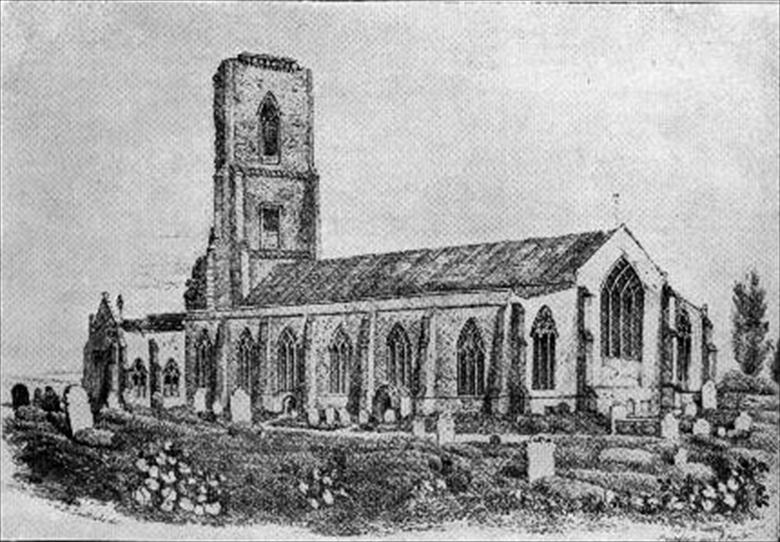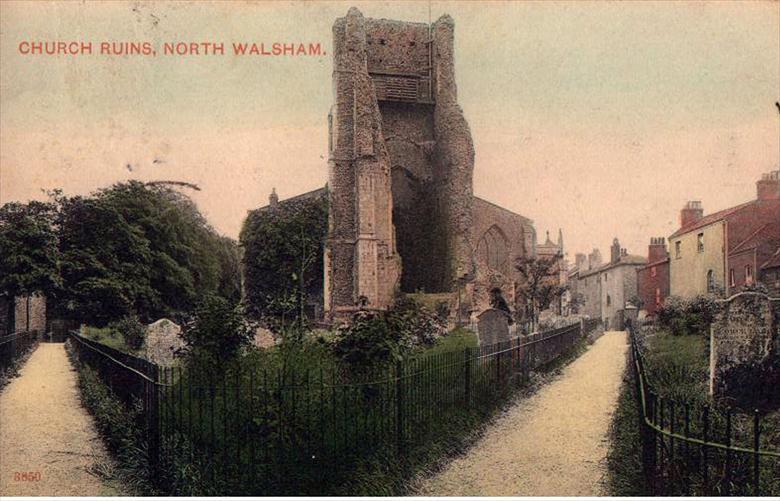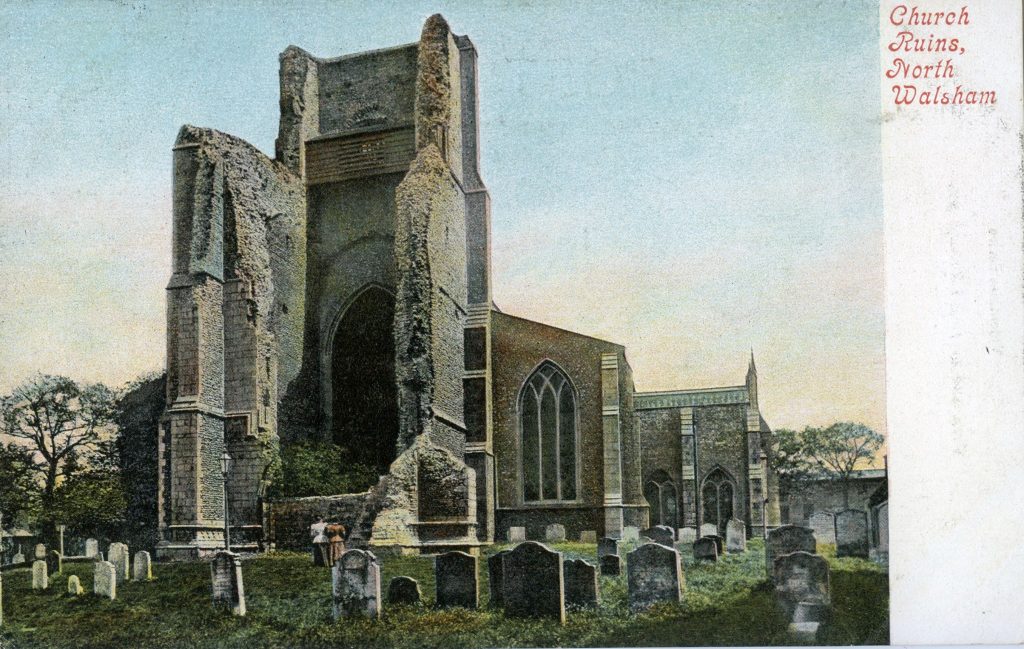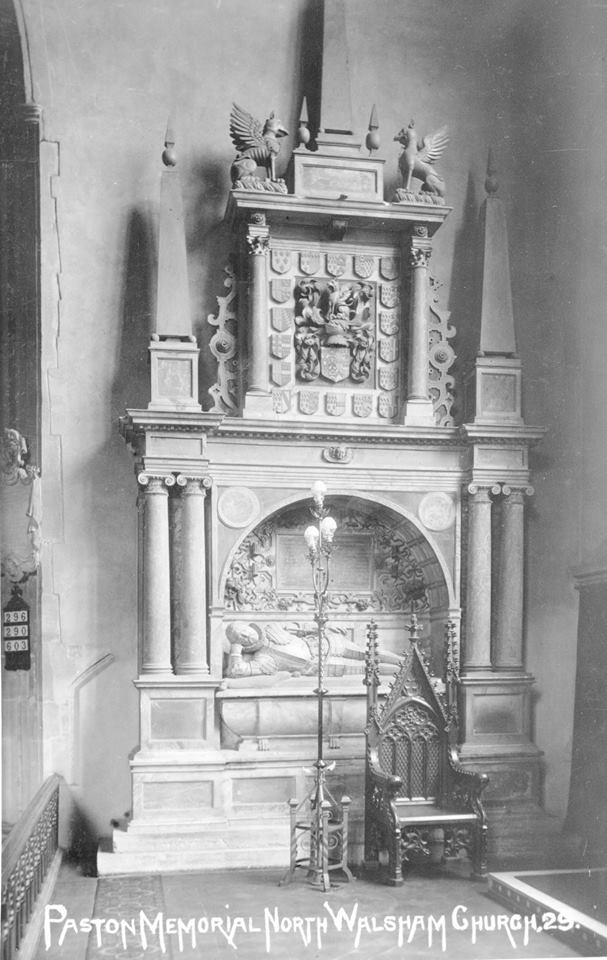The Saxon church
The only remaining part of the earliest church is known as the Saxon tower and stands to the north of the western tower. Without an archaeological dig or a geophysical survey it is not known whether this tower was a central or western tower or the extent of the nave and chancel of the former church. There is no evidence the south porch ever had an upper floor so it is assumed this old tower was used as a priest’s room, chapel, library and strong room at various times in history.
The medieval church
The current building was started in 1338 but was under threat 10 years later by the Black Death plague. Further outbreaks in 1361 and 1369 further weakened the town. Building was finally completed in 1406. The town’s population was then c850 but had the benefits of profits from the wool and weaving industries to pay for their huge new church. The porch was the last part of the building to be finished and includes the arms of St Benet’s Abbey and those of John O’Gaunt.
The church is said to have featured in the turmoil of the peasants’ revolt and the battle of North Walsham in 1381. It is probable that the incomplete church needed some repair after this, but not complete re-building as local legend claims.
Many interesting artefacts remain in the church including the fifteenth century font cover. Richly carved and decorated with a fascinating telescopic mechanism, it hangs from a carved oak beam. Of a similar date are the remains of a wooden screen which separated the clerical chancel from the people’s nave. Its mediaeval panels are carved and painted with an array of saints. The south chapel contains an unusual sixteenth century Communion Table; unusual because of the ‘corrected’ inscription along its front panel made after an alteration of the Prayer Book. Also to be seen are an Iron Bound Chest, two remaining tip-up seats from the monk’s mediaeval quire, and a wooden Armoury Chest.
The church is entered from the Market Place through a magnificent pinnacled porch, with rich carving and heraldic shields. The colourful statues are replacements, showing Saint Benedict, Saint Nicholas (the present day dedication of the church) and in the centre niche, the Virgin Mary with infant Christ (the church was originally dedicated to the Blessed Virgin Mary).
The churchyard here is small. Burial Registers go back to October 10th 1541. The burial registers give indications of plague and illness that took their toll on the town’s population. In 1558 110 burials are recorded, well above the average of less than 20 at that time. When the plague struck the town in 1626 there are 138 recorded burials for the year, 59 in one month alone. In 1742 there is a note by July, ‘At this time the Small Pox broke out in the town and continued with great violence for several months’.
Arms board
Before the Reformation the Pope was the earthly head of the church. With the break with Rome Henry VIII declared the King and his successors the only ‘Supreme Head on Earth of the Church of England’. As a visible reminder churches were required to hang the Royal Arms of the monarch. The first record of a Royal Arms board at North Walsham is in 1600 when those of Queen Elizabeth I were placed in the church. These were altered to those of James I in 1604. In 1632, the Arms of Charles I were painted on canvas. None of these survive, but hanging like a ‘pub sign’ above this exhibition is a double-sided board. On one side are the Arms of the Commonwealth and on the other those of Charles II.
Commonwealth Arms boards are extremely rare and this dates to the period 1649-1653. When King Charles II was restored to the throne in 1660, Parliament decided that all Commonwealth Arms should be removed and those of the King set up instead. In the case of North Walsham the Churchwardens simply reversed the board.
The ruined tower
From whichever direction you enter the town, the building that dominates more than anything else is the ruined tower of the church. Is strange shape is a recognisable feature in North Walsham’s landscape and draws many people to investigate it.
In the early eighteenth century the town boasted a glorious, soaring tower and spire, the tallest construction locally, being second in height only to Norwich Cathedral. It is known that the parapet reached a height of 147 feet, with a spire later added to compete with the then new church tower at Cromer. This spire may have taken its height to around 180 feet.
A heavy ring of six bells was hung in the tower which also housed a chiming clock. Friday 15th May 1724 saw the town’s Ascensiontide Fayre, and the bells were rung for many hours. The ringing of the bells combined with a rather windy day caused a vibration to occur in the tower. This was noticed by the verger when he ascended the tower in the evening to wind the clock. He was so alarmed by the distressed state of the tower that the clock remained unwound as he fled to warn people away. The following day the south face of the tower collapsed.
Memorandum by an eye witness, Thomas Cooper Esq.
“Between eight and nine a clock in the morning the steeple of North Walsham fell down. It was visibly seen by a great part of the inhabitants to work [crumble] for about an hour before it fell. The Sexton with some others were up the steeple about 2 hours before to wind up the clock, but seeing a shard come down, without winding the clock, he descended to tell the inhabitants: which gave them timely notice that there was so many ye more on that account that see that dreadful sight, ye day before being ye fair day, as is well, many people many people went up the steeple. It gave such warning and was so long in falling that I bless God no body received any harm. All this I was an eye witness to”.
In 1835 more falls indicated the weakness of the upper stonework. February 17th 1836 saw the last major fall when heavy wintry gales brought down the north side of the steeple with a crash that sent earthquake-like tremors through the town. The remaining east wall of the belfry stage was then dismantled as a safety precaution.
In 1939 stabilisation work was carried out on the tower, in the hope that one day rebuilding might be possible.


50 subscribers had donated a sum of £130.12s.6d and tenders were to be invited when the sum exceeded £150. The scheme eventually came into fruition in 1903 when the churchyard was fenced and planted with shrubs.
The photograph, taken around 1907, shows the success of the scheme and the layout of the paths which are largely similar to today. Alas, the scheme was short lived as the demands for scrap metal during the First World War saw the metal railings removed from the churchyard

